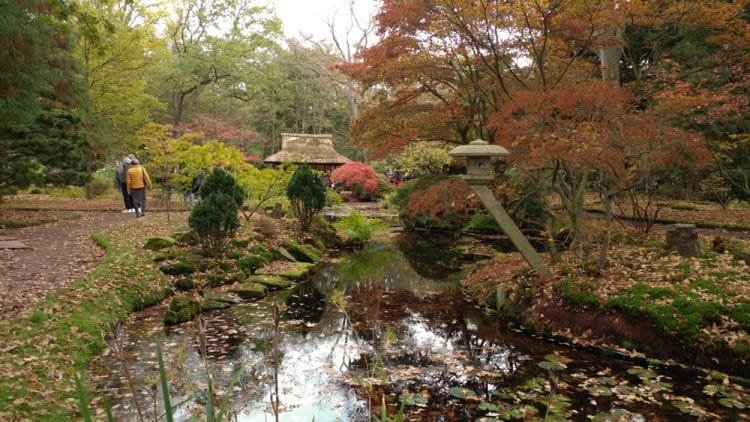Outside Japan there are quite a few Japanese gardens. Between The Hague and Wassenaar you also have one, namely the Japanese Garden that can be found at Landgoed Clingendael. According to Tourist Information Office this is the most famous part of Park Clingendael.
History Japanese Garden Clingendael
The garden was laid out at the beginning of the 20th century by Marguerite M. Baroness van Brienen (1871-1939). She was often called lady Daisy. She was able to visit the country Japan by ship. From Japan she has shipped a few lanterns, a water barrel, figurines, and the bridges to the Netherlands. It is not certain whether the pavilion is also shipped from Japan. The Japanese Garden is the only one in the Netherlands from around 1910. The garden is not very big, but is a great location for rest and reflection.
When is the Japanese Garden Clingendael opened?
The Japanese Garden at Clingendael estate is open but very few, ie twice a year. This is because the garden is quite vulnerable. In the spring period, the period is open in six weeks, and in the autumn period only two weeks. These are called the perfect periods, the garden shows itself at its best. In the spring the garden is open from 9 am to 8 pm and in the autumn the garden is open from 10 am to 4 pm. Outside these times it is not possible to visit the garden. Not even by appointment. In addition, there may be too many visitors in the Japanese Garden. If so, you will have to wait a while before the garden can be visited. An employee who works at the Japanese Garden can indicate this.
Accessibility Japanese Garden Clingendael
Clingendael estate is accessible through the main entrance on the Wassenaarseweg. There are also entrances to the park on Van Alkemadelaan, Ruychrocklaan and Van Ouwenlaan. There is an unguarded bicycle parking at the main entrance. In addition, to reach the property by public transport. You can take bus 18 to Landgoed Clingendael. Once arrived at the estate, the Japanese Garden can be found by following the signs.
Extra: What is a Japanese garden?
The Japanese gardens are traditional gardens where the design is associated with the Japanese beauty and philosophical ideas, artificial adornment is avoided and the natural scenery is emphasized. Perfection is something that suits the Japanese gardens. Hills, trees, moss, waterfalls, rocks, islands and bridges are examples of components that you may encounter in a Japanese garden. In the water, you can find koi fish and turtles. The way the stones and trees are placed seems done haphazardly, but it is well thought out. The garden must look like nature has made it so.








